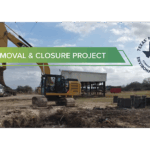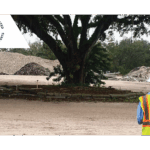
In the field of environmental due diligence, Phase 1 Environmental Site Assessments play a crucial role in evaluating the potential risks associated with a property. This article aims to provide an in-depth understanding of Phase 1 Environmental Site Assessments in the context of Tampa, Florida. By exploring their purpose, key components, process, regulatory framework, common findings, and impact on property transactions, we can gain valuable insights into this important environmental assessment tool.
Understanding Phase 1 Environmental Site Assessments
Phase 1 Environmental Site Assessments are comprehensive studies conducted to identify potential environmental hazards on a property. Their primary purpose is to evaluate if there are any recognized environmental conditions (RECs) that may impact the property’s value, pose health risks, or require further investigation.
Purpose of Phase 1 Environmental Site Assessments
The main purpose of conducting Phase 1 Environmental Site Assessments is to provide a baseline understanding of a property’s environmental condition. These assessments assist property owners, purchasers, lenders, and other stakeholders in making informed decisions regarding real estate transactions or property development projects.
By conducting a Phase 1 Environmental Site Assessment, stakeholders can gain valuable insights into the potential risks associated with a property. This information allows them to assess the financial implications of any necessary remediation or mitigation measures, as well as to evaluate the long-term sustainability of the property. Additionally, these assessments help ensure compliance with environmental regulations and promote responsible land use practices.
Key Components of Phase 1 Environmental Site Assessments
Phase 1 Environmental Site Assessments involve a comprehensive evaluation of various factors related to the property. These assessments typically include:
- Site inspection: A thorough examination of the property, including its physical characteristics, surroundings, and potential sources of contamination.
- Historical research: A review of historical records, including aerial photographs, maps, city directories, and other relevant documents, to identify any past uses or activities that may have contributed to environmental concerns.
- Report compilation: A detailed report summarizing the findings of the assessment, including the presence or absence of RECs, potential contamination sources, and recommendations for further action if necessary.
During the site inspection phase, environmental professionals meticulously examine the property, taking note of any visible signs of contamination or potential sources of environmental hazards. This includes assessing the condition of buildings, infrastructure, and surrounding land. Additionally, they may collect soil, water, or air samples for laboratory analysis to further assess the presence of contaminants.
Historical research plays a crucial role in Phase 1 Environmental Site Assessments as it helps uncover past activities or land uses that could have contributed to environmental concerns. By reviewing historical records, professionals can identify if the property was previously used for activities such as manufacturing, waste disposal, or chemical storage, which may have left behind contaminants that could pose risks to human health or the environment.
Once all the necessary data has been gathered, a comprehensive report is compiled, summarizing the findings of the assessment. This report not only presents the presence or absence of RECs but also provides recommendations for further action if necessary. These recommendations may include additional investigations, remediation measures, or the implementation of best management practices to minimize potential risks.
The Process of Conducting Phase 1 Environmental Site Assessments in Tampa
The process of conducting Phase 1 Environmental Site Assessments in Tampa entails several essential steps to ensure a comprehensive evaluation of the property’s environmental condition.
Initial Site Inspection
The initial phase of the assessment involves a meticulous site inspection. Environmental professionals visit the property to document its physical characteristics, such as buildings, infrastructure, and any potential sources of contamination. This step also includes an assessment of neighboring properties that may affect the subject property’s environmental condition.
Historical Research
Historical research forms a vital part of Phase 1 Environmental Site Assessments in Tampa. It involves a thorough review of historical documents, such as aerial photographs, fire insurance maps, and city directories. By examining these records, environmental professionals can uncover any past uses or activities that might have contributed to existing or potential environmental concerns.
Report Compilation
Once the site inspection and historical research are complete, environmental professionals compile a detailed report summarizing their findings. The report outlines any identified RECs, potential contamination sources, and recommendations for further investigation or mitigation measures if needed.
Regulatory Framework for Phase 1 Environmental Site Assessments in Tampa
Phase 1 Environmental Site Assessments in Tampa adhere to a regulatory framework defined by both federal and state regulations.
Federal Regulations
At the federal level, Phase 1 Environmental Site Assessments are governed by the Environmental Protection Agency’s (EPA) All Appropriate Inquiries Rule. This rule outlines the standards and procedures that must be followed to conduct a legally compliant assessment. Adhering to these regulations is critical to ensure the validity and defensibility of the assessment.
State of Florida Regulations
In addition to the federal regulations, Phase 1 Environmental Site Assessments in Tampa must also comply with the regulations set forth by the state of Florida. These regulations supplement the federal requirements and may include specific guidelines or considerations relevant to the local environmental conditions.
Common Findings in Tampa Phase 1 Environmental Site Assessments
Phase 1 Environmental Site Assessments in Tampa may uncover various findings that need to be carefully evaluated and assessed.
Recognized Environmental Conditions
One common finding in Phase 1 Environmental Site Assessments is the identification of recognized environmental conditions (RECs). RECs refer to the presence of hazardous substances, petroleum products, or other pollutants that may cause environmental concerns or pose risks to human health. When RECs are identified, further investigation or remediation measures may be necessary.
Historical Recognized Environmental Conditions
In some cases, the historical records reviewed during the assessment may reveal the existence of past RECs that have been addressed or remediated. These historical RECs provide critical insights into the property’s previous environmental challenges and the effectiveness of measures taken to mitigate them.
Impact of Phase 1 Environmental Site Assessments on Property Transactions
Phase 1 Environmental Site Assessments have significant implications for property transactions, particularly in terms of risk management and property development.
Risk Management in Real Estate Transactions
By conducting a Phase 1 Environmental Site Assessment, property owners and prospective purchasers can identify any potential environmental liabilities associated with the property. This helps mitigate the risk of unforeseen costs, legal liabilities, or negative impacts on property value. Lenders often require a Phase 1 Environmental Site Assessment as part of their due diligence process to ensure the property’s environmental risks are adequately assessed.
Implications for Property Development
Phase 1 Environmental Site Assessments are vital considerations during property development projects. They help developers understand the environmental constraints and potential challenges associated with a property. By identifying any RECs or contamination sources early on, developers can plan appropriate mitigation measures and ensure compliance with environmental regulations, promoting sustainable and responsible development.
In conclusion, Phase 1 Environmental Site Assessments are essential tools in evaluating the environmental condition of properties in Tampa. By understanding their purpose, key components, process, regulatory framework, common findings, and impact on property transactions, stakeholders can make informed decisions and mitigate environmental risks. Conducting these assessments not only protects property owners and purchasers but also contributes to sustainable and responsible real estate development in Tampa.
As you navigate the complexities of Phase 1 Environmental Site Assessments in Tampa, partnering with a knowledgeable and experienced environmental consulting firm is key to ensuring thorough due diligence and compliance with regulatory standards. ESE Partners is dedicated to responsibly moving business forward through environmental problem solving. Our expertise in due diligence, remediation, and compliance, combined with our strategic presence in major markets, positions us to offer unparalleled support for your environmental assessment needs. Whether you’re involved in a real estate transaction, property development, or require specialized water compliance services, our team is equipped to deliver honest, quality-driven results. Stay ahead of changes, such as the USACE’s updated review process for DA permit applications in the Galveston County District, by choosing ESE Partners as your trusted environmental consultant. Request A Proposal today and let us help you achieve sustainable and responsible development in Tampa.








